The One World Trade Center in New York City, part of the World Trade Center complex, is a significant architectural landmark embodying contemporary modernist architecture. It was designed by David Childs of Skidmore, Owings & Merrill and was constructed post-9/11 as a symbol of resilience and hope. One WTC showcases modernist elements with sleek glass and steel construction, geometric forms, and minimal ornamentation. It incorporates postmodern elements through its complex geometry, symbolizing remembrance and hope. The design reflects the spirit of innovation, using advanced technologies and environmentally sustainable features. One WTC employs a reinforced concrete core to stabilize and resist torsional forces. The steel moment frame supports gravity loads and redistributes loads in case of damage. The facade system features unitized curtain wall panels with insulated glass, tested against hurricane-force winds. The building includes advanced safety features like pressurized exit stairs, fire-protected systems, and backup power sources. The original WTC, including the Twin Towers, was designed by Minoru Yamasaki, employing a modernist design with a distinctive “tube” structural system for stability and open interior spaces. The complex also included a hotel and smaller office buildings, united by a central plaza with a sculptural sphere by Fritz Koenig. One WTC’s design draws historical influences from New York City’s Art Deco skyscrapers, like the Chrysler and Empire State Buildings. The surrounding structures, such as Calatrava’s Oculus, incorporate Gothic and Art Deco details while reflecting contemporary styles. The original WTC influenced New York City architecture by pioneering the “tube” structural system, allowing column-free interiors. Post-9/11, One WTC set new standards in safety and resilience, impacting the design of other high-rise buildings in the city. One WTC is a hub for international business and commerce, offering state-of-the-art office spaces and amenities. The WTC is maintained through regular inspections of critical systems, seasonal maintenance, and remote monitoring for performance metrics. Architects can learn from the WTC’s focus on safety, resilience, public-private partnerships, environmental sustainability, and the power of iconic architecture in driving civic revitalization. New York City offers a plethora of architectural landmarks for architects to visit, including the Guggenheim Museum by Frank Lloyd Wright, the Seagram Building by Mies van der Rohe and Philip Johnson, Fallingwater by Wright, the Brooklyn Bridge by John Augustus Roebling, and Grand Central Terminal.
What is the One World Trade Center?
The One World Trade Center is an iconic commercial complex in Lower Manhattan, New York City. Construction on 1 WTC began in 2006 after the tragic destruction of the original World Trade Center towers in the 9/11 terrorist attacks of 2001. The building was developed through a partnership between the Port Authority of New York and New Jersey and The Durst Organization. The lead architect for the building was David Childs of Skidmore, Owings & Merrill. The One World Trade Center stands 1,776 feet (541.3 meters) tall to its architectural top and 1,792 feet (546.2 meters) to the tip of its spire. The building contains 94 floors above ground and 5 basement levels below ground, with a total floor area of approximately 3,501,274 square feet (325,279 square meters). Key dimensions defining its unique shape include a cubic base with 200 feet (61 meters) sides, an octagonal middle section, and a 150 feet (46 meters) square glass parapet rotated 45 degrees at the top. The building also features 408 feet (124 meters). The spire consists of a mast and communication rings. WTC has a concrete core and steel frame structural system with a high-performance glass curtain wall facade. It incorporates state-of-the-art life safety systems that exceed New York City building code requirements.
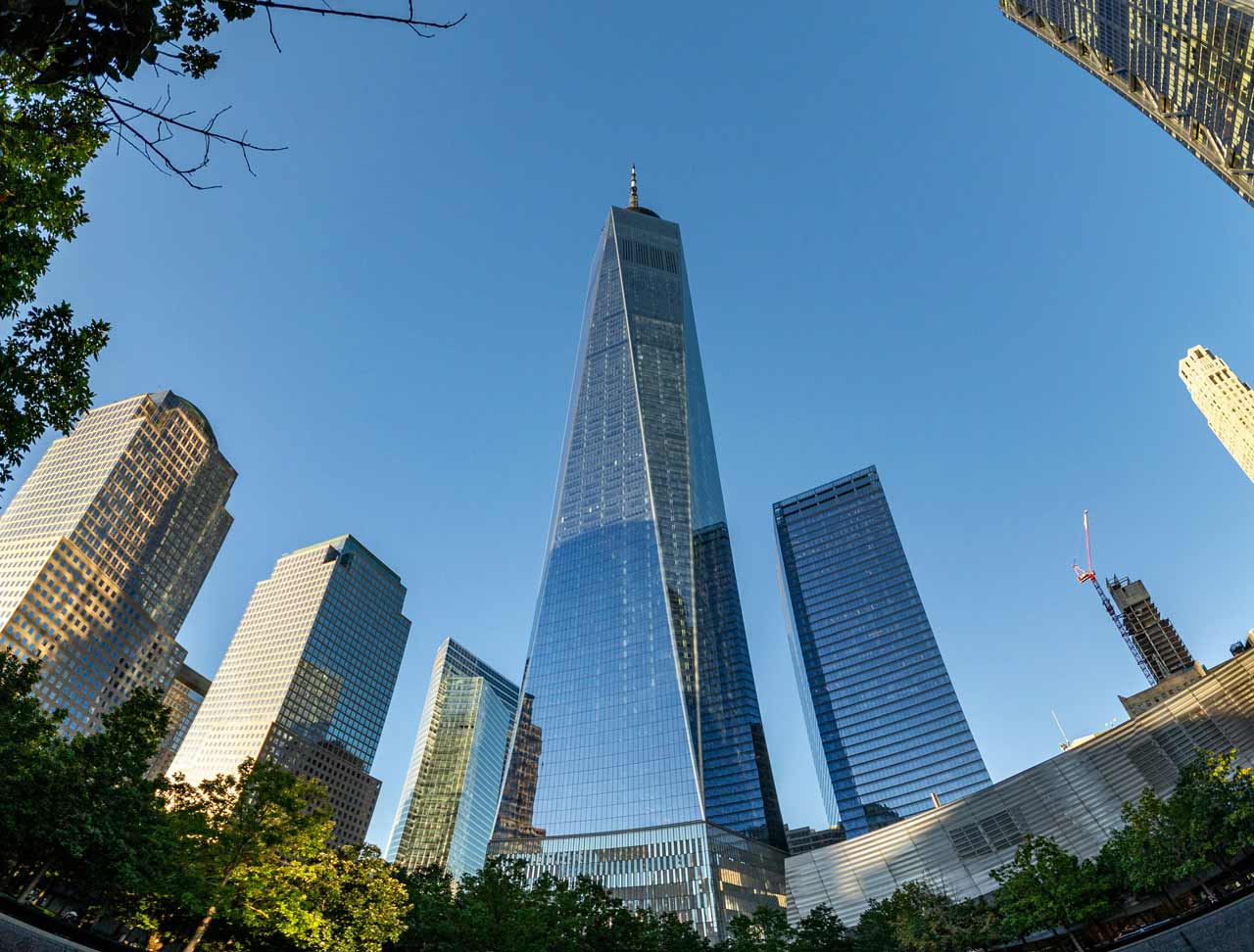
What architectural style is most prominent in the One World Trade Center?
The design of One World Trade Center and the World Trade Center complex embodies contemporary modernist architecture. Architect David Childs of Skidmore, Owings & Merrill designed One WTC to capture the spirit of innovation and progress, using cutting-edge building technologies and environmentally sustainable features. This follows in the tradition of early 20th-century modernist architects who embraced new engineering advances and forms of expression. At the same time, One WTC incorporates subtle postmodern elements. The geometry shifts in an interlocking pattern from bottom to top. The cubic base aligns with the footprints of the original Twin Towers, then transitions to an octagon and culminates in a square rotated 45 degrees from the base. This complex geometry provides a sense of dynamism and intricacy more associated with postmodernism. The tower was conceived as a symbolic form that references the original Twin Towers while reaching upwards with hope. The height of 1,776 feet (541 meters) is a nod to the year the Declaration of Independence was signed. The surrounding structures of the World Trade Center campus, including the National September 11 Memorial Museum, the transportation hub, and other office towers, feature contemporary materials and a focus on user experience characteristic of modernism. For example, Calatrava’s winged Oculus maximizes natural light and facilitates visitor flow. However, the expressive shapes and forms, especially in how the Oculus references a dove being released, add a symbolic dimension that connects to postmodernism.
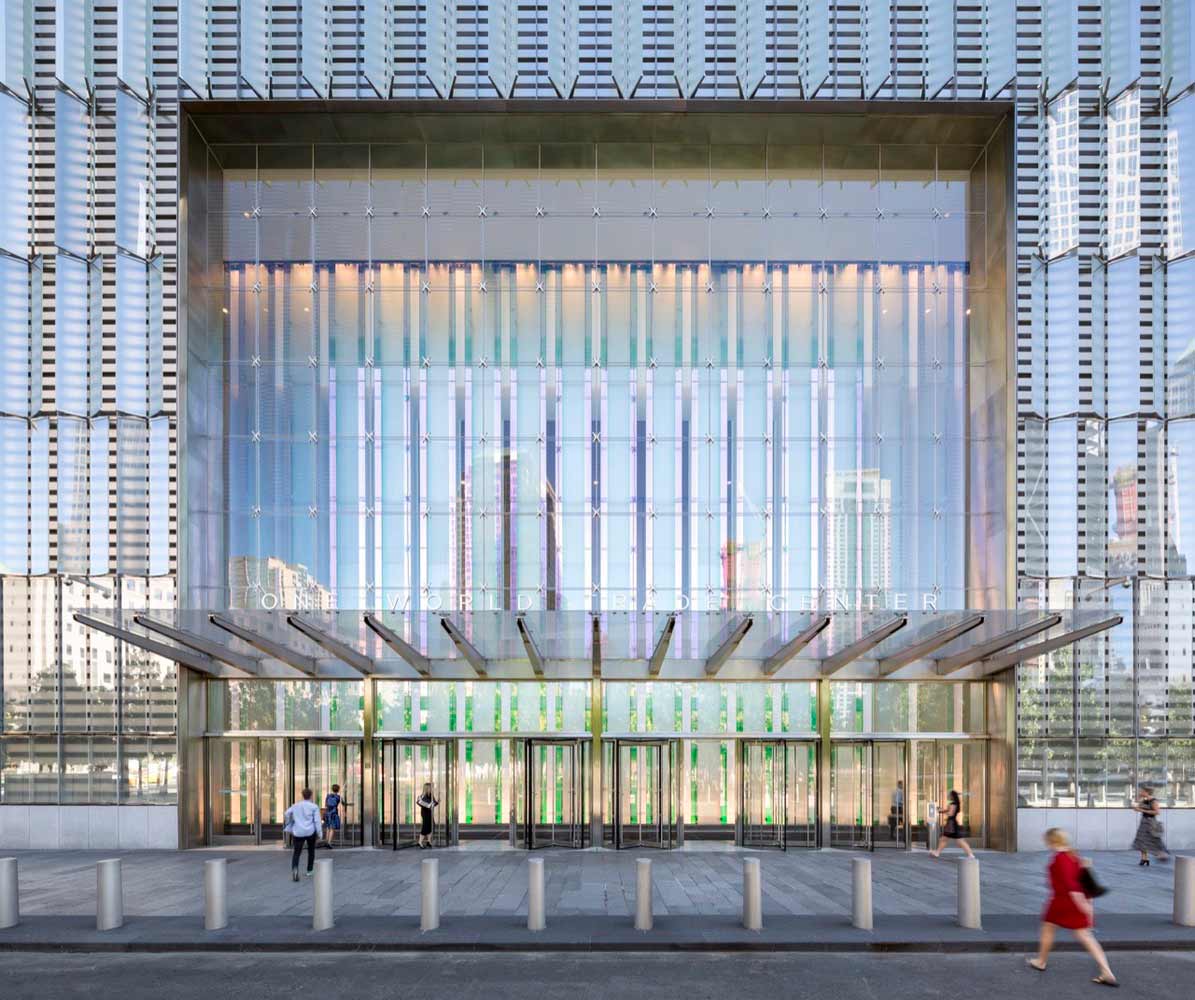
What structural engineering principles are employed in the construction of the One World Trade Center?
The construction of the One World Trade Center employed various structural engineering principles to ensure its stability and resilience. Firstly, a reinforced concrete core over 23.62 inches (60 centimeters) thick in certain areas provides lateral strength and resistance to torsional forces from the wind. A steel moment frame surrounding the core supports the gravity loads of each floor and allows load redistribution in case of localized damage. The facade system uses unitized curtain wall panels with insulated glass to maintain thermal control while maximizing views and daylight. Secondly, the glass panels and aluminum framing components underwent wind tunnel testing to withstand hurricane-force winds. Dampers within the structure also mitigate wind-induced vibrations. Thirdly, the tower incorporates several safety enhancements, including pressurized, extra-wide exit stairs, fire-protected emergency systems, and multiple backup power sources. Over 75% of steel structural components were manufactured from recycled materials to promote sustainability, and advanced mechanical systems significantly reduce energy and water usage.
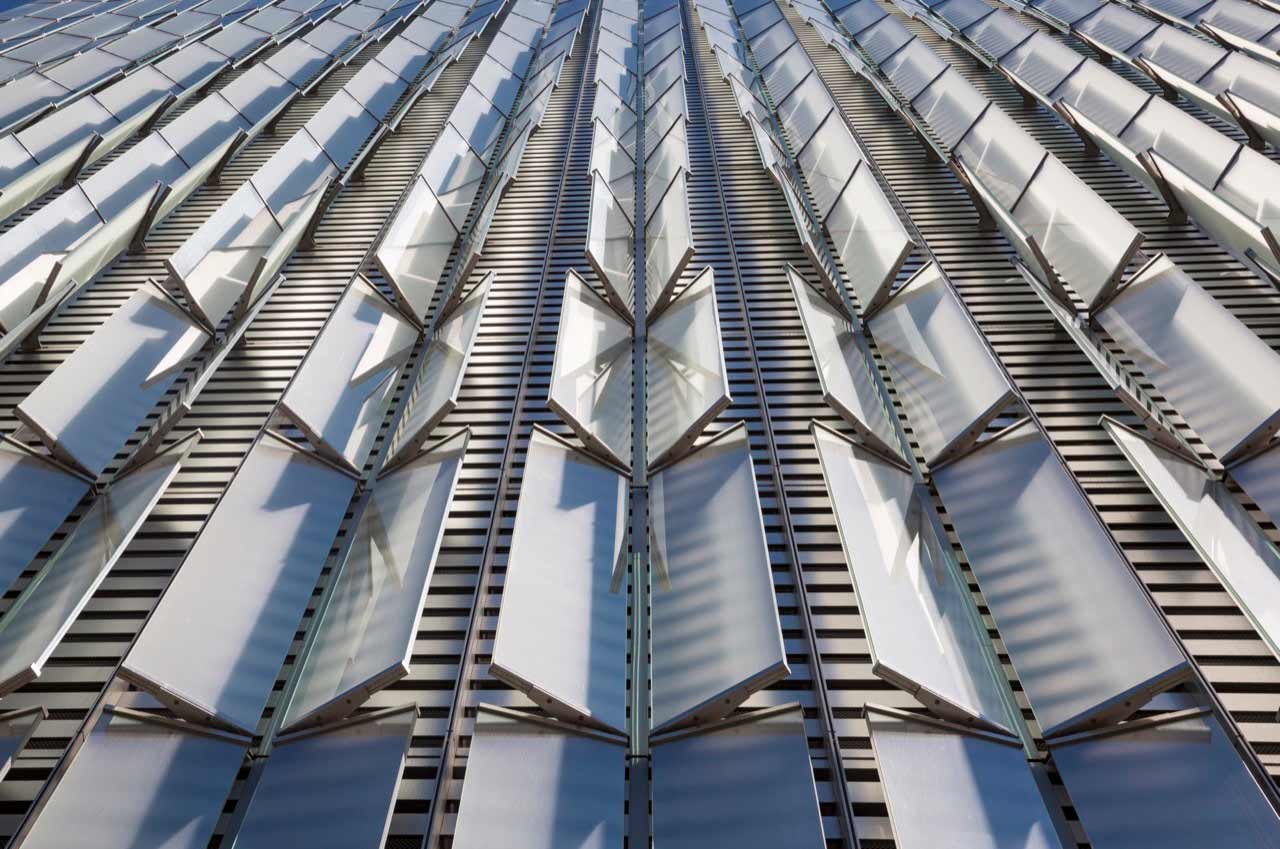
Who designed the One World Trade Center?
The original World Trade Center was a complex of seven buildings in Lower Manhattan, including the landmark Twin Towers, a hotel, and four smaller office buildings. Minoru Yamasaki, a prominent American architect known for his modernist designs, was the lead architect selected to design the World Trade Center. Yamasaki worked closely with the engineering firms Worthington, Skilling, Helle & Jackson, and Leslie E. Robertson Associates to develop the unique structural system needed for the unprecedented height of the 110-story Twin Towers. Chief structural engineer Leslie E. Robertson innovated a lightweight floor truss system to meet the significant engineering challenge of the towers’ height. The perimeter columns provided lateral stability, while the core structural system comprised dense steel. This tube-frame structural system allowed the towers to sway slightly in solid winds, counteracting the effects of vortex shedding. The other buildings Yamasaki designed for the World Trade Center included the Vista Hotel and 5 World Trade Center office buildings. The rest of the complex featured an outdoor central plaza with a large sculptural sphere designed by Fritz Koenig. Tragically, on September 11, 2001, the landmark Twin Towers were destroyed in a terrorist attack along with several other World Trade Center buildings. The new One World Trade Center tower and surrounding complex, built to replace the destroyed buildings, was designed through another major architectural collaboration led by David Childs of Skidmore, Owings & Merrill. It stands on the northwest corner of the World Trade Center site where the original Twin Towers once stood.
What are the historical design influences visible in the One World Trade Center?
The design of the World Trade Center draws historical influence from several key architectural styles. Firstly, One World Trade Center’s sleek silhouette evokes the skyscraping Art Deco towers that have defined New York’s famous skyline since the early 20th century. Its tapering triangular facets are reminiscent of landmarks like the Chrysler and Empire State Buildings. Secondly, subtle postmodern elements emerge with intricate geometry that shifts from a square base aligned with the original Twin Towers’ footprints, transitions into an octagon, and culminates in a rotated square parapet. This interlocking shape adds a symbolic dimension to reference the past tragedy while reaching upward into the future. Lastly, the height of 1,776 feet (541 meters) itself nods to the year the Declaration of Independence was signed, imbuing the form with added symbolic meaning. The surrounding buildings at the One World Trade Center site equally showcase contemporary interpretations of notable styles. For example, Calatrava’s winged Oculus structure channels Gothic architecture through its vaults and abundance of light. The shells forming the space have an almost cathedral-like quality.
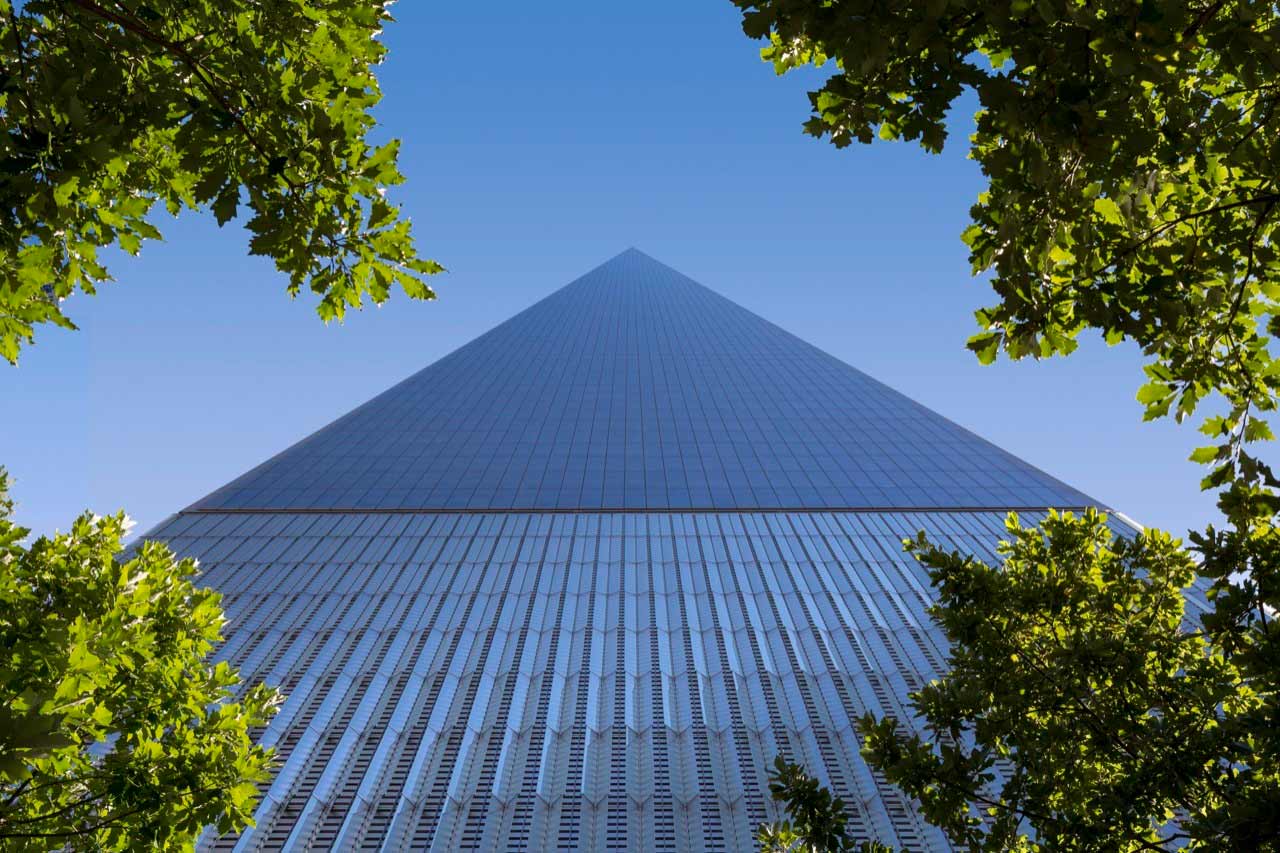
How has the One World Trade Center influenced the design of other buildings in New York City?
The original World Trade Center complex, designed by Minoru Yamasaki and completed in the early 1970s, pioneered a tall “tube” structural system that enabled unprecedented column-free interior spaces. This allowed for flexible and open office layouts. The tubular design principle, consisting of closely spaced perimeter columns connected by deep spandrel beams across a building facade, has since been used in many famous New York skyscrapers such as the Hearst Tower, Bank of America Tower, and One Bryant Park.
After the tragic destruction of the original World Trade Center in 2001, its replacement—One World Trade Center—brought a renewed focus on safety and resilience in high-rise design. One WTC incorporates a robust concrete core, extra exit stairs and elevators, fire-protected emergency systems, and structural enhancements to prevent progressive collapse. These features have set a new standard now being integrated into other towers in New York and beyond.
The height of One WTC, built to the symbolic 1,776 feet (542 meters), also re-established New York developers’ desire to push height boundaries after years of more conservative heights following 9/11. This competition to maximize size and views has influenced buildings, including 111 West 57th Street, 53W53, and Central Park Tower, all vying to be among the city’s tallest. One WTC’s striking faceted geometric shape, drawing inspiration from iconic New York skyscrapers like the Chrysler Building, reinvigorated the importance of unique and recognizable silhouettes in skyline-defining towers. This is seen in new towers like The Spiral by BIG at Hudson Yards with its curled tapering shape.
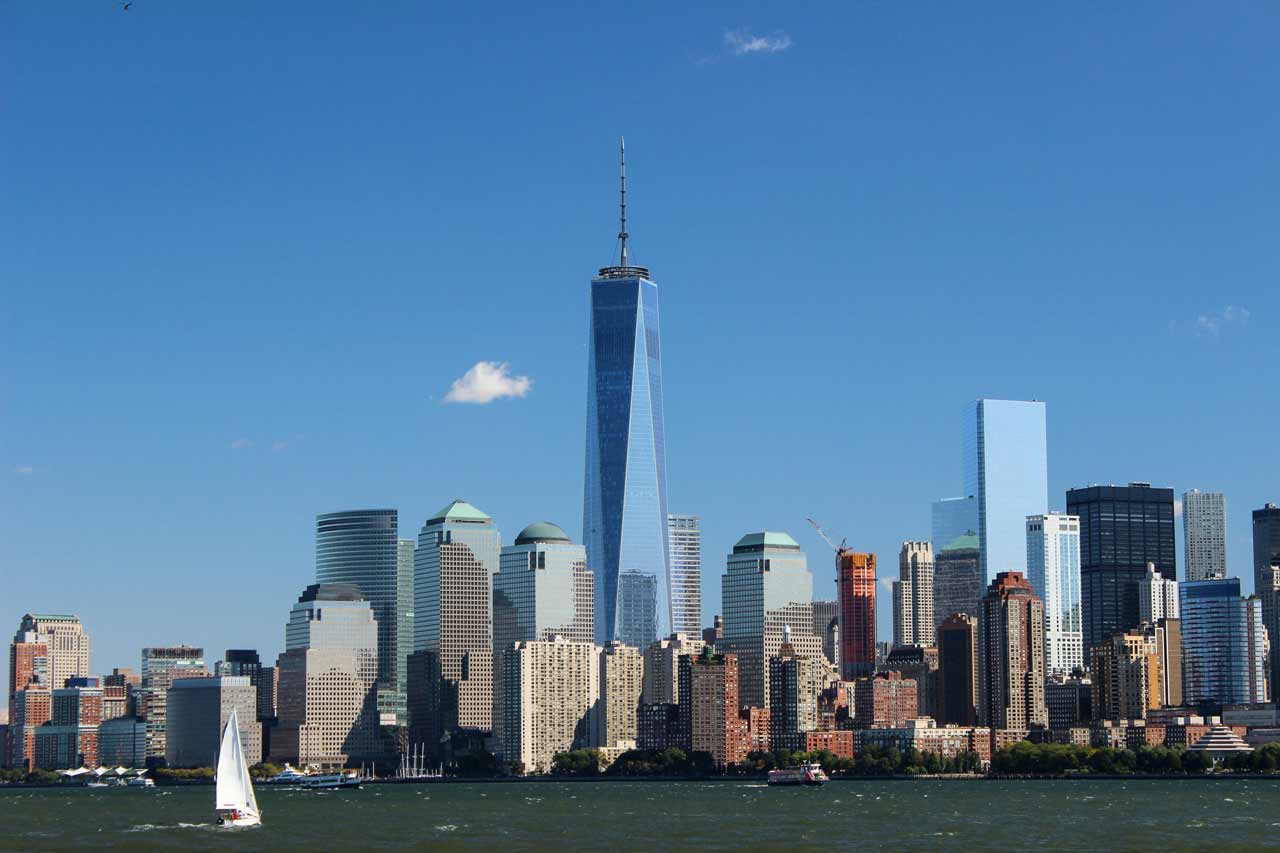
What purpose does the One World Trade Center serve and how does the design help?
The One World Trade Center is a hub for international business and commerce, with state-of-the-art office spaces, retail shops, restaurants, and amenities to facilitate global trade and enable the free flow of ideas, people, and capital worldwide.
The centerpiece of the complex, One World Trade Center, exemplifies how the design helps achieve this purpose. Its towering 104-story height makes a bold architectural statement while housing premium office space suited for major global corporations. This visual form is aesthetically inspiring and highly functional, creating column-free, open floor plates with panoramic views to appeal to prestigious commercial tenants. One WTC’s entrances on all four sides integrate access for visitors, occupants, and transit connections through the below-grade transportation hub. This central accessibility nurtures a dynamic, interconnected business ecosystem. The tower also boasts environmental sustainability and safety features that facilitate comfortable, resilient operations.
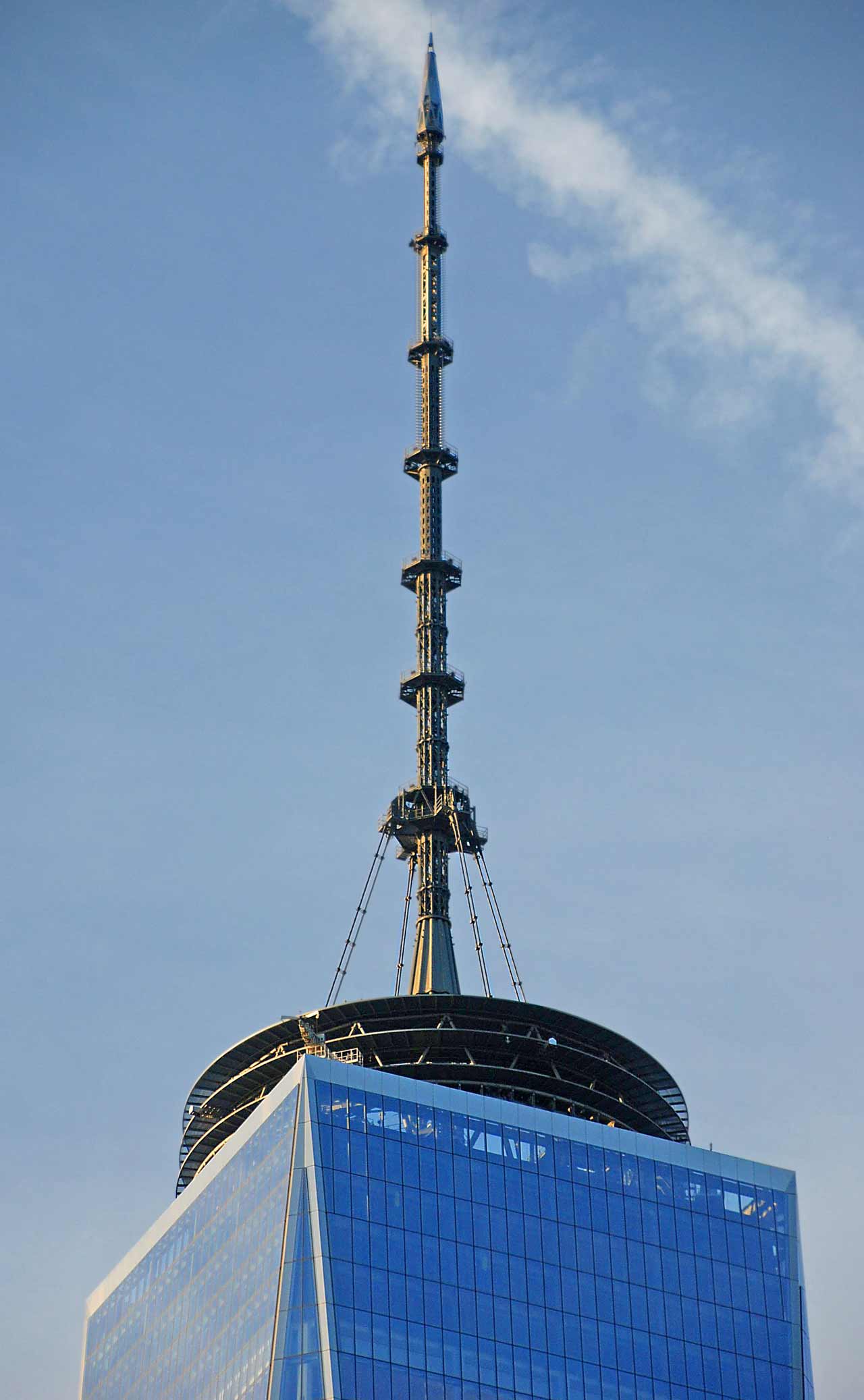
How is the One World Trade Center maintained?
The One World Trade Center is maintained through state-of-the-art systems and procedures that ensure the buildings are always in top condition. Regular preventative maintenance is carried out daily by teams that inspect critical systems like electrical, plumbing, HVAC, vertical transportation, and life safety infrastructure. More extensive maintenance is done seasonally or annually, such as cleaning cooling towers and heat exchangers before summer and tuning up boilers and heating infrastructure before winter. Remote monitoring systems track performance metrics around the clock and rapidly detect irregularities. If a problem arises, crews can be quickly dispatched to fix it. Predictive models are used to optimize maintenance scheduling based on sensor data. In winter months, snow clearing and salting are done as needed. Elevator mechanics conduct regular examinations, and emergency personnel are always prepared to respond to entrapments or shutdowns. Fire pumps, standpipes, sprinklers, alarms, emergency lighting, and backup systems are continuously verified as functional.
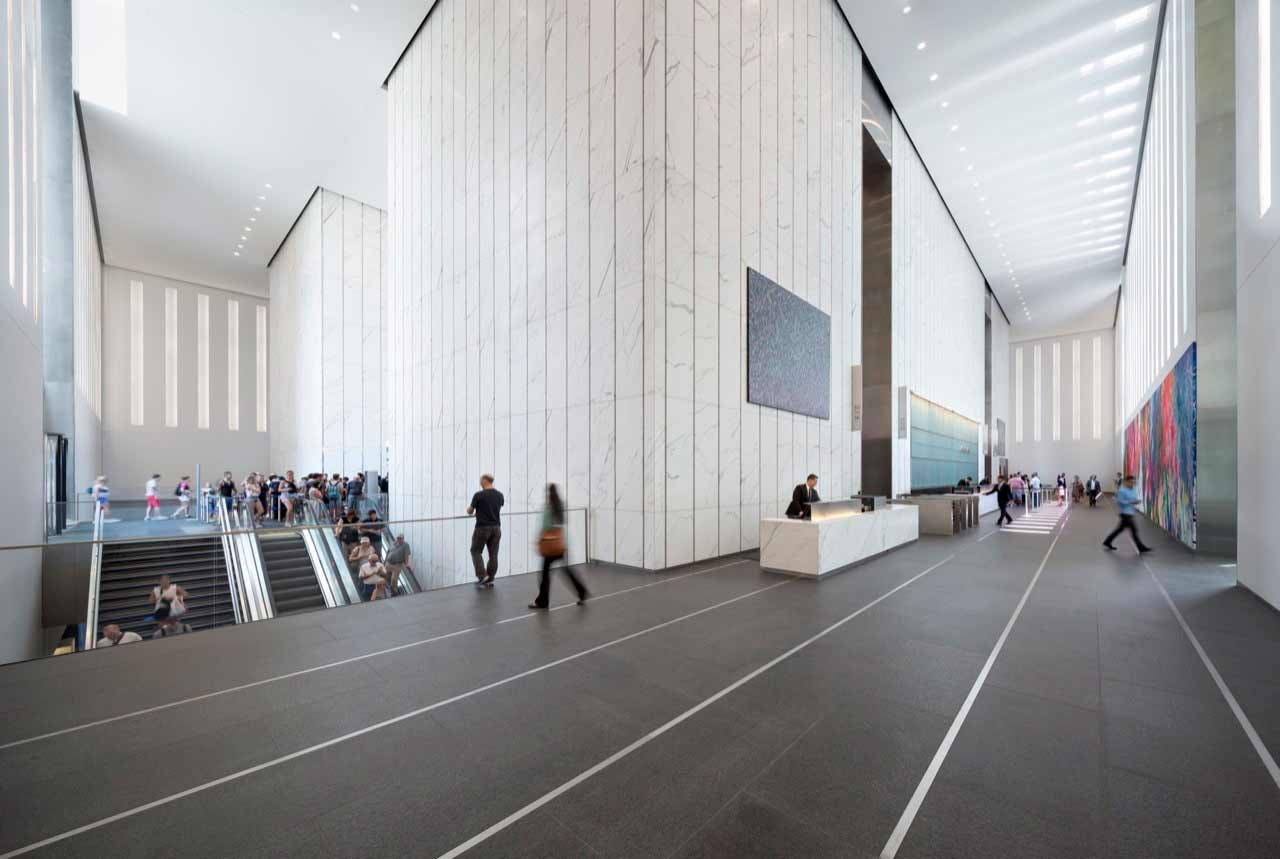
How does the One World Trade Center reflect cultural and contextual relevance in its design?
The design of the One World Trade Center reflects cultural and contextual relevance in several key ways. Firstly, WTC was conceived as a symbolic form representing resilience and remembrance in the wake of the tragic 9/11 terrorist attacks that destroyed the original Twin Towers. Its height nods to the year the Declaration of Independence was signed, imbuing the design with patriotic meaning. Secondly, the modernist aesthetic of WTC, with its glass curtain wall, evokes iconic New York skyscrapers like the Chrysler Building. The building captures the essence of innovation and aspiration fundamental to New York City and American culture more broadly. Lastly, the surrounding buildings, including the winged Oculus transportation hub designed by Santiago Calatrava, provide contemporary reinterpretations of various architectural influences, from Gothic vaulted ceilings to Art Deco details. They blend international and local vernaculars through form, spatial configuration, materials, and detailing.
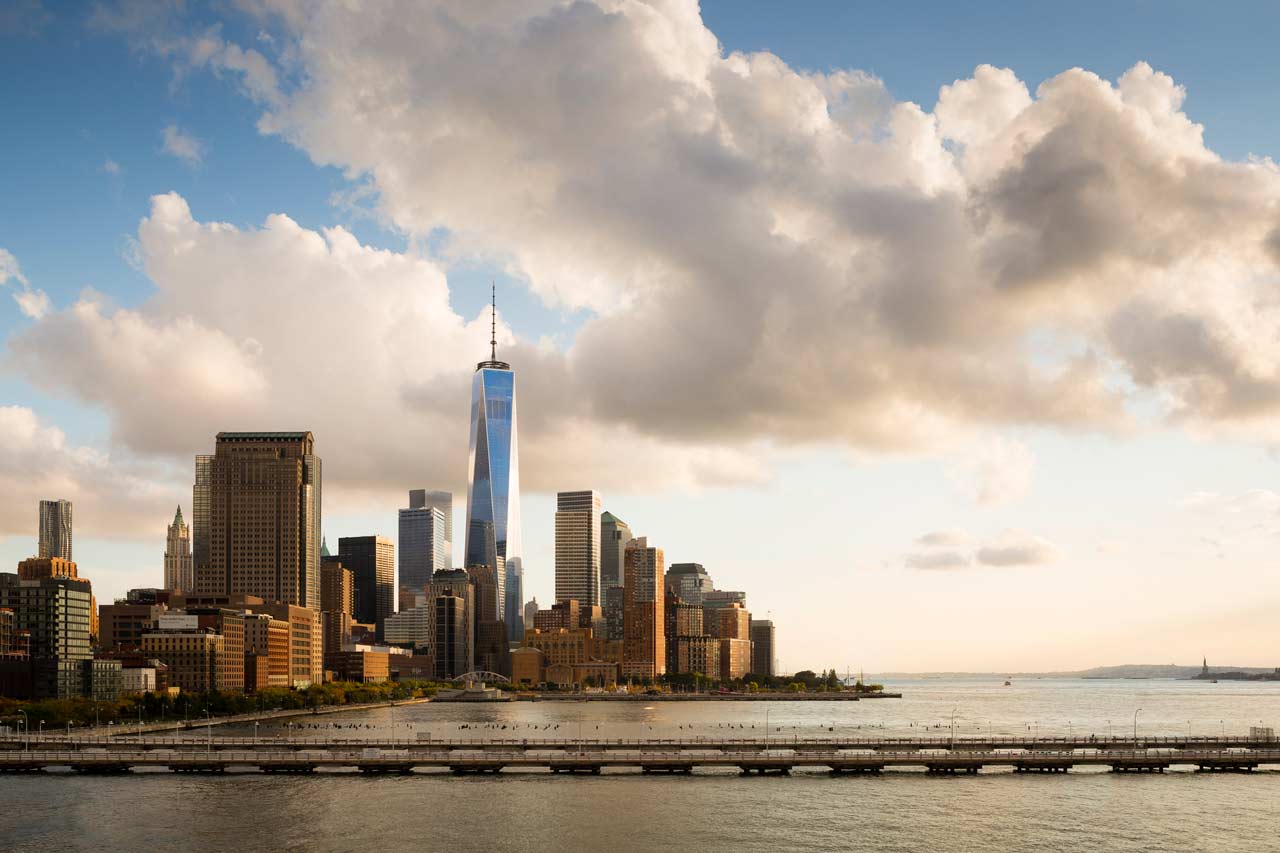
What architectural trend or movement does the One World Trade Center represent?
The One World Trade Center represents contemporary modernist architecture with subtle postmodern influences. The One World Trade Center was designed to capture the spirit of innovation, progress, and resilience fundamental to New York City. Architect David Childs embraced new technologies and sustainable strategies while creating a simple, aspirational silhouette. At the same time, the interlocking, dynamic geometry of One WTC nods to postmodernism. The base aligns with the original Twin Towers’ footprints, then transitions from a square to an octagon and rotates into a square orientation at the top. The surrounding structures equally blend modern and postmodern traits. Its modernist towers epitomize innovation with their advanced structural engineering and sustainable strategies. The postmodern sculptural forms and spatial configurations poetically acknowledge the past. This synthesis creates a forward-looking architectural language befitting New York City’s dynamic evolution.
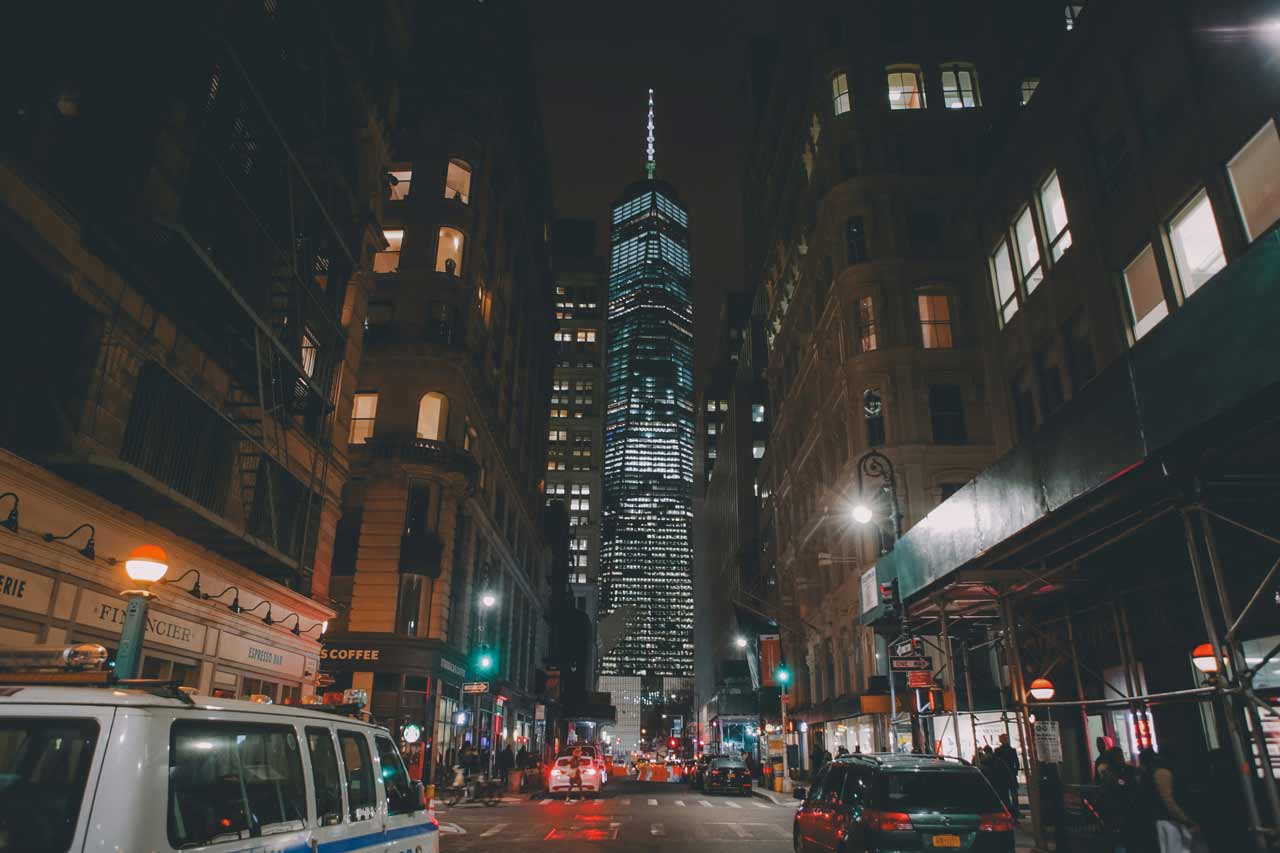
What are the challenges faced during the restoration of the World Trade Center?
The restoration of the World Trade Center after the 9/11 terrorist attacks posed challenges, including addressing the profound trauma, complex stakeholder interests, technical difficulties of building on a 16-acre site, and significant safety concerns. The greatest challenge was determining how to rebuild on a site marked by tragic loss of life and emotional devastation. Competing visions for memorializing victims and reinvigorating the area had to be reconciled. This involved extensive discussions with victims’ families, residents, government agencies, and the public. Additionally, coordinating the priorities of various public and private stakeholders with authority over the site introduced complexities. There were also technical hurdles in constructing the transit hub, vehicle security center, and towers on a site already dense with infrastructure. Ensuring life safety was paramount, given the 9/11 attacks exposed vulnerabilities. For example, blast-resistant features, enhanced fireproofing, and structural redundancies allowing load redistribution were incorporated. The multi-billion-dollar price tag required piecing together public and private funding sources. Supply chain and construction challenges included procuring massive materials and coordinating thousands of workers across several towers rising.
How does the One World Trade Center comply with contemporary safety and accessibility standards?
The rebuilt World Trade Center complex incorporates accessibility features that exceed modern standards. Safety was a top priority in the design of One WTC and the more excellent WTC campus. The buildings implement robust life safety systems, drawing lessons from 9/11 to protect against hazards. One WTC is fully enhanced fireproofing of structural elements. Emergency communications systems have redundancies, and stairwells are reinforced with concrete and pressurized to prevent smoke infiltration. Structurally, the tower incorporates blast-resistant features and setbacks to mitigate risks from vehicle-borne attacks. Mechanical equipment is strategically distributed to avoid single points of failure. Critical building mechanics are located above flood elevation. The new transit facilities and towers meet or surpass the Americans with Disabilities Act standards. One WTC has wheelchair-accessible building entrances, tactile ground surface indicators, and accessible restroom facilities. It has advanced intelligent security systems that provide 24/7 monitoring while minimizing disruption to visitor flow. Features like retractable bollards and street closures allow emergency vehicle access without compromising pedestrian safety.
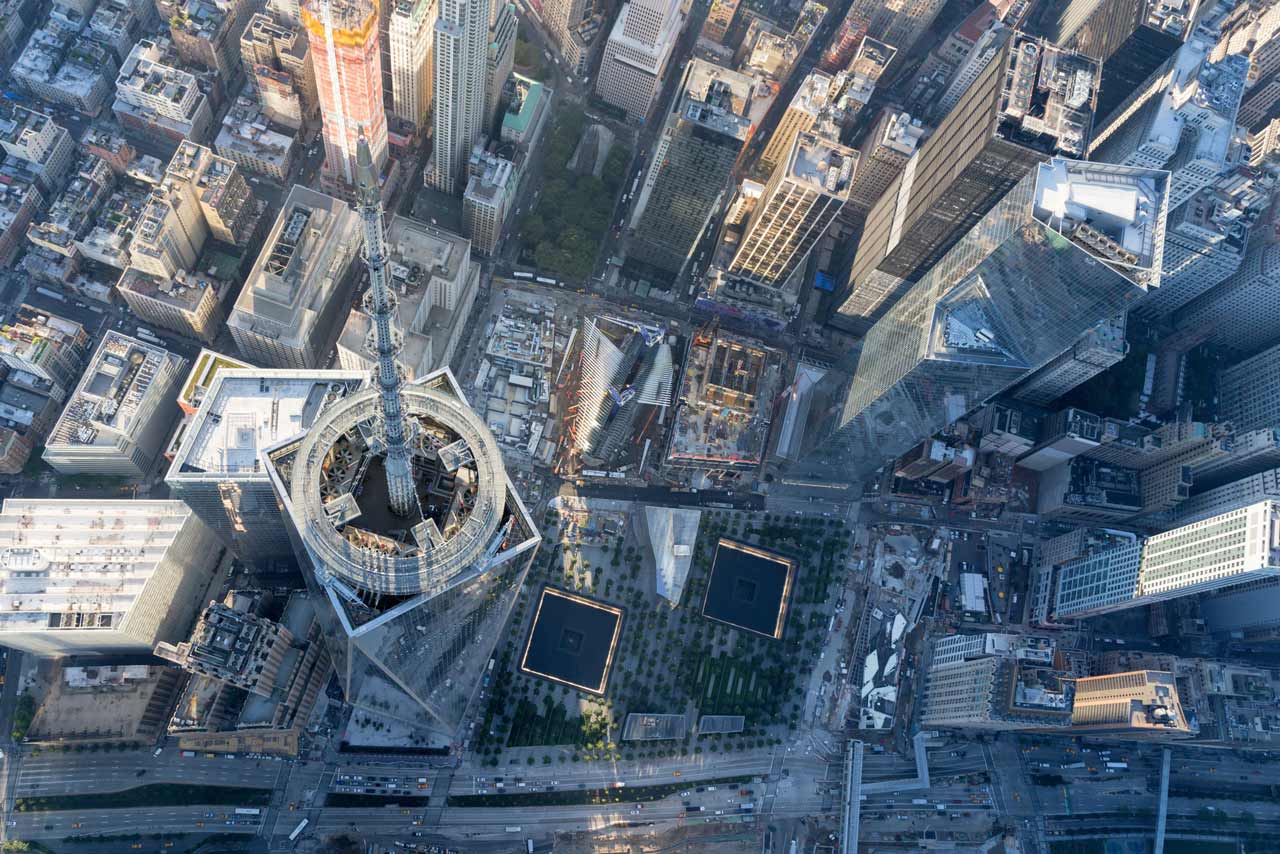
Are there any specific tours for architects or architecture enthusiasts visiting the One World Trade Center?
Yes, several tours and experiences at the One World Trade Center are specifically tailored for architects and architecture enthusiasts. The flagship tour for architects is the “Architecture of the World Trade Center” tour offered by the Lower Manhattan Cultural Council. This 90-minute guided walking tour provides an in-depth look at the urban design and architectural history of the World Trade Center campus.
Led by architects, historians, and arts professionals, the tour examines the original World Trade Center complex designed by Minoru Yamasaki, discusses the 9/11 Memorial and Museum, and delves into the contemporary architecture of the new buildings like One World Trade Center, Calatrava’s Oculus, and 3, 4, and 7 World Trade Center. Special attention is given to the engineering feats, building materials, design philosophies, and urban planning decisions that shaped the site.
There is another tour tailored for design enthusiasts is the “Art & Design of the World Trade Center Campus” tour by Tribeca Performing Arts Center. It also grants behind-the-scenes access to artist studios housed onsite. For self-guided exploration, the Skyscraper Museum in Battery Park City frequently spotlights World Trade Center architecture and urban design through exhibitions and programming. When available, the museum also leads occasional hardhat tours of World Trade Center construction sites. Those heading to the One World Observatory can opt for the “Architecture and History Tour” add-on to their experience. This features commentary from a guide on the building’s exterior design as visitors ascend to the 102nd floor in a dedicated elevator.
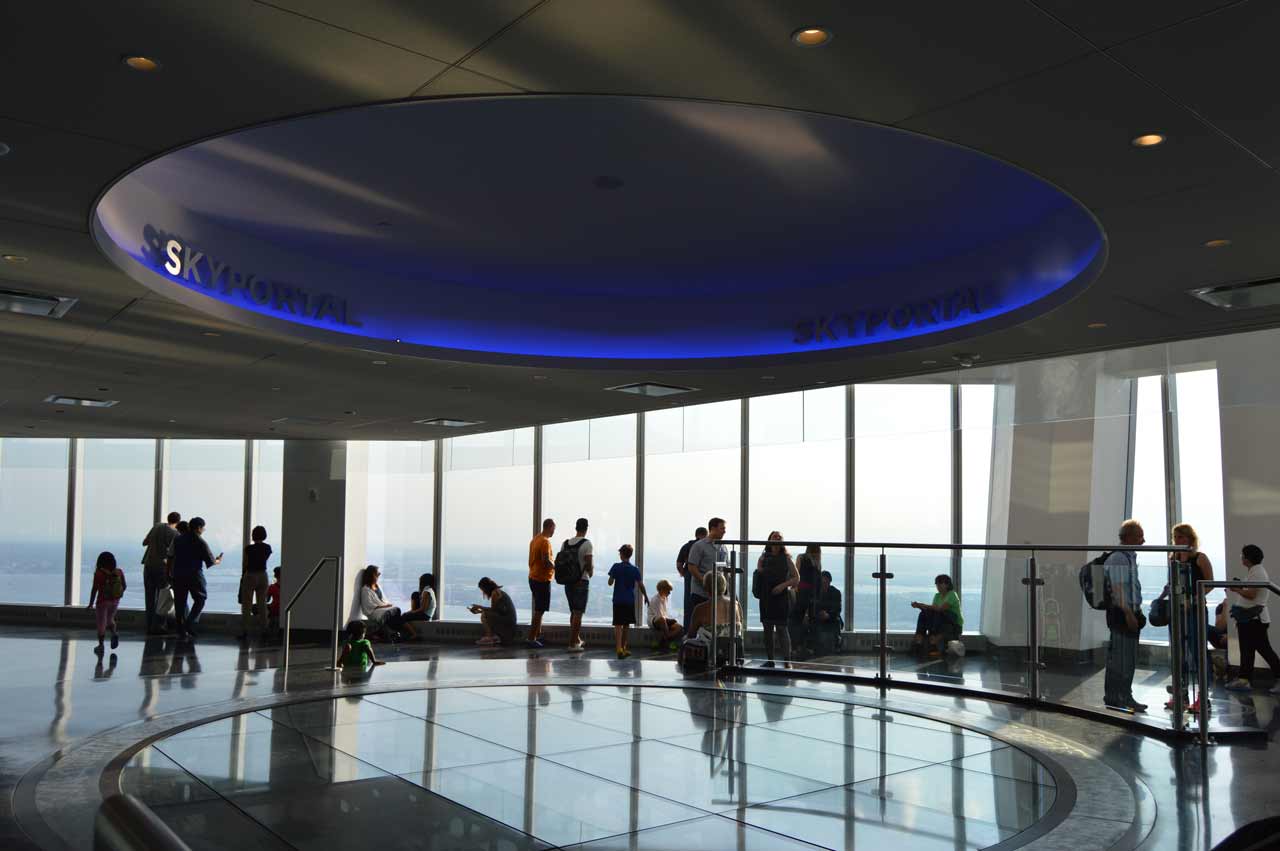
What lessons can architects learn from the design and construction of the One World Trade Center?
Architects can learn several key lessons from the design and construction of the One World Trade Center. Firstly, safety and resilience should be paramount considerations. The WTC incorporates robust structural systems, fire protection, backup systems, and emergency egress routes exceeding code to create redundancy and resilience against disasters. Architects must prioritize life safety using the latest technologies. Secondly,
iconic architecture catalyzes renewal. One WTC’s soaring height and bold silhouette catalyzed the resurgence of Lower Manhattan, demonstrating architecture’s power to drive civic revitalization. Thirdly, public-private partnerships enable large-scale projects. The complex financing and coordination of the Port Authority and private developers was essential to realizing the vision. Architects should leverage such collaborative models. Lastly, environmental sustainability must be integrated. One WTC achieved LEED Gold certification for its energy-efficient systems. Architects must reduce resource consumption through thoughtful design. Safety, resilience, memorialization, urban renewal, private-public synergy, and sustainability were crucial to the WTC campus’s $4 billion (€3.7 billion, £3.1 billion) redevelopment. As a towering emblem of New York’s resilience, it holds key insights for architects striving to create iconic landmarks anchored in context and community.
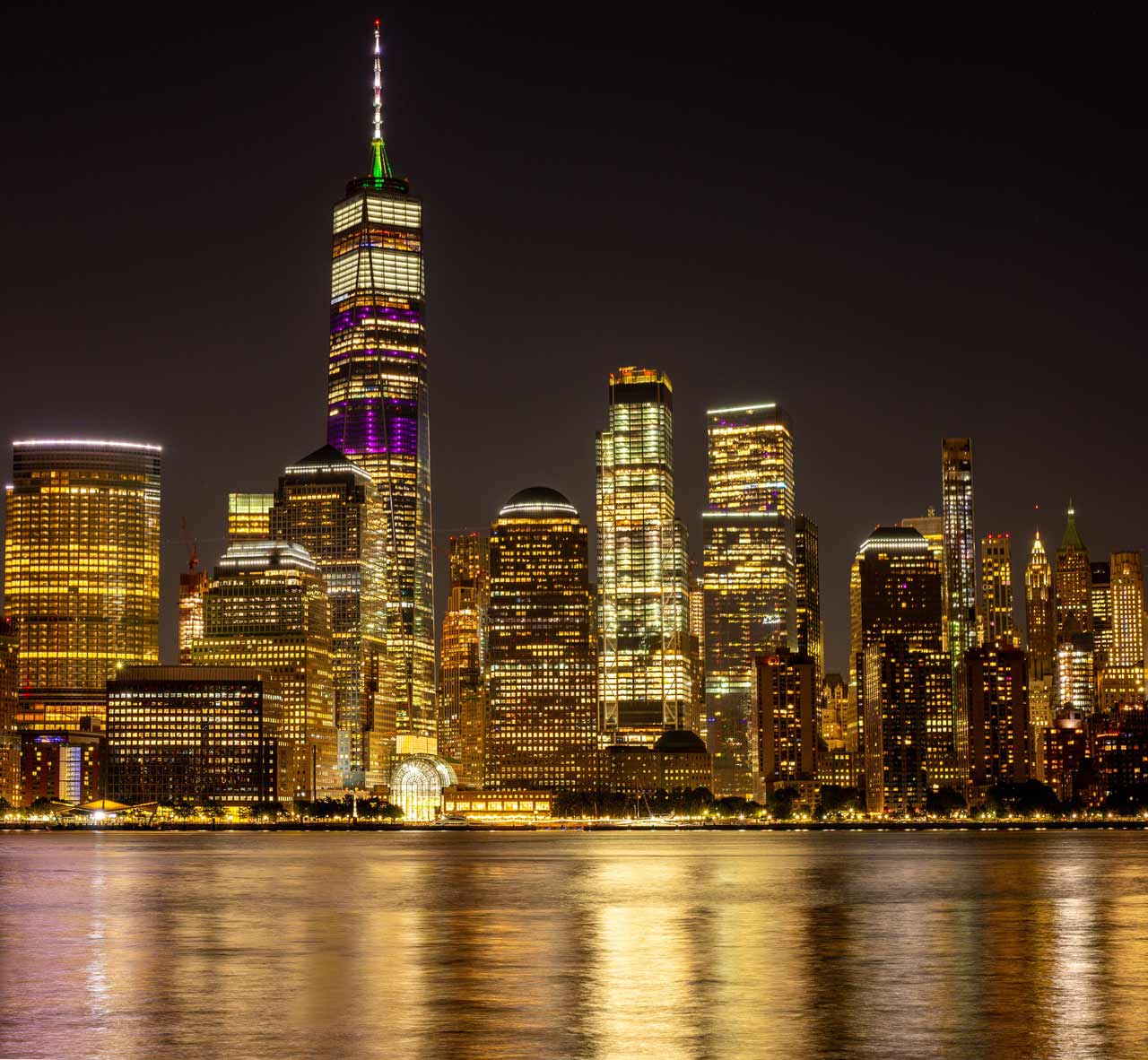
What are the best architectural landmarks in New York City to visit as an architect?
Listed below are the best architectural landmarks in New York City to visit as an architect.
- Empire State Building: The Empire State Building is a must-visit for architects interested in the evolution of high-rise construction. Designed by Shreve & Lamb and completed in 1931, this iconic structure was once the world’s tallest building. Its distinctive stepped form and steel frame construction represent significant advancements in skyscraper technology. The building’s observation decks provide a unique perspective on New York City’s urban layout, making it not just an architectural icon but also a key vantage point for understanding the city’s development.
- Guggenheim Museum: The Guggenheim Museum by Frank Lloyd Wright is a landmark destination for architects exploring organic architecture. Opened in 1959, its unique spiral structure and continuous ramp challenge traditional museum layouts, offering an uninterrupted journey through the exhibits. Wright’s design philosophy, which sought harmony between the structure and its environment, is demonstrated in the museum’s integration with its urban context. The building’s form and function make it a pivotal study in architectural innovation.
- Chrysler Building: The Chrysler Building is an architectural symbol of the Art Deco era, making it an essential visit for architects studying this design movement. Completed in 1930 and designed by William Van Alen, its distinctive stainless steel crown and spire showcase exquisite decorative artistry. The building’s interior, especially its lobby, reflects the opulence of the late 1920s and early 1930s. It stands as a testament to the era’s architectural creativity and the technological advancements in skyscraper design.
- The High Line: The High Line is an outstanding example of urban regeneration and landscape architecture, offering architects insights into innovative urban design and public space revitalization. Transformed from an elevated freight rail line into a public park by Diller Scofidio + Renfro and James Corner, it blends horticulture, art, and design within a dense urban context. This project demonstrates the potential of adaptive reuse in urban environments and the integration of green spaces within cityscapes.
- One World Trade Center: One World Trade Center is a significant architectural site for architects interested in skyscraper design and urban resilience. Completed in 2014 and designed by David Childs of Skidmore, Owings & Merrill, it stands as a symbol of rebirth on the site of the original Twin Towers. The building features advanced safety and sustainability elements, making it a modern architectural marvel. Its design respects the site’s history while marking a new era in high-rise construction.
- Flatiron Building: The Flatiron Building is an architectural icon and a pioneering skyscraper in New York City, significant for architects studying early 20th-century urban architecture. Completed in 1902 and designed by Daniel Burnham, its unique triangular shape and Renaissance Revival style were innovative for its time. The building’s slender profile and distinct facade have made it a symbol of New York’s architectural heritage, offering insights into the city’s architectural evolution.
- Brooklyn Bridge: As one of the oldest suspension bridges in the United States, the Brooklyn Bridge is a landmark of engineering and architecture. Completed in 1883 and designed by John Augustus Roebling, it connects Manhattan and Brooklyn across the East River. The bridge’s Gothic-style stone towers and intricate cable arrangement make it a study in both aesthetic beauty and structural ingenuity. For architects, it represents a significant moment in the history of bridge design and urban connectivity.
- Seagram Building: The Seagram Building, designed by Ludwig Mies van der Rohe and Philip Johnson, is a fundamental site for architects interested in modernist architecture. Completed in 1958, this skyscraper is celebrated for its functional aesthetics and adherence to the ‘less is more’ philosophy. Its use of high-quality materials, like bronze and travertine, and the concept of the elevated plaza as an urban space, have influenced subsequent office building designs. The building exemplifies the International Style and has had a lasting impact on corporate architecture.


